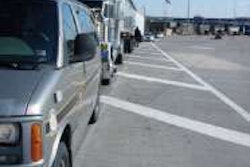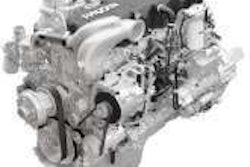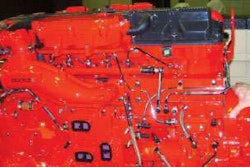Q We are a property broker that arranges transportation using various load matching services. We do all that we can to confirm that the carrier we hire is licensed, authorized and insured, and our contract precludes double brokerage. We are sick and tired of our customers being dunned by subcontracted carriers who do not get paid by the carrier we hire. It seems like the spot market is full of dishonest middlemen who accept shipments as carriers and then broker the loads to third parties, collect the money and disconnect their phones. How can we keep our customers from being dunned by the carriers these middlemen hire but fail to pay?
 Henry Seaton [email protected]
Henry Seaton [email protected]A The problem you raise seems to be getting worse, not better. Under traditional principles of federal transportation law, the bill of lading is the contract between the consignor and the carrier who provides the service. The carrier delivers the freight on time and intact, in return for the consignor’s promise to pay the freight charges. As I have written before, most circuits allow the carrier recourse to the consignor in the event of nonpayment by the intermediary that the shipper retains.
Hence, a predicament results when somebody in the middle runs off with the money and the victims are left to sort out who bears the risk of loss. The carrier that demands payment from the consignor probably does not know you were even involved. It is not a party to the contract between you and the carrier/broker who tendered him the load, so he had no notice that the shipment was being double-brokered without your permission.
While I believe the equities in case law generally favor the carrier’s recourse to the shipper and double payment by you or the shipper if necessary, my opinion does not solve the problem or create a safe and secure supply chain. The problem of double brokerage goes well beyond the issue of freight charge payment and is exacerbated, if not caused, by the fact that all too frequently the consignor does not know or does not care who actually transports its freight.
All too frequently, the shipper prepares the bill of lading and inserts the broker’s name as the carrier. It is a mistake, in my view, for the broker to allow this. The consignor needs to know the name of the contracted carrier and to make sure that the contracted carrier is the one that makes pickup. This can be done by simply matching the name on the bill to the name on the door of the tractor.
Completing this loop is necessary for several reasons. First, if the POD was verification that the carrier you hired provided the service, your double-payment exposure would be largely alleviated. Secondly, it is a misrepresentation of the broker regulations for you to represent yourself as a carrier. If you sign a shipper’s contract as a carrier and allow your name to appear in the carrier block on the bill, aren’t you contributing to the very confusion and fraud that creates the problems of which you complain? Moreover, when you are represented on the bill as the carrier, you invite being named in a vicarious liability lawsuit when some renegade carrier you never hired is involved in an accident.
Thirdly, you should have real concerns about cargo loss or damage claims. When loads are double-brokered without your knowledge, you have no way to assure your shipper that the carrier in possession and control of the shipment can even pony up a certificate of cargo insurance for what it’s worth. Finally, after 9-11, there are ever-increasing TSA and FDA regulations that require verification and monitoring of chain-of-custody issues that are violated when the shipper cannot identify the actual custodian of its freight, to say nothing of the potential hijack or larceny-by-fraud issues that can result.
In sum, I know it is a novel idea to suggest that a broker should provide the shipper with the name of the authorized carrier it hires and ensure that chain of custody be verified and confirmed at point of origin. However, “trust but verify” is the most prudent course of action.
– Henry Seaton is a transportation lawyer who represents carriers.
Mid-States Express sued for unpaid benefits
The U.S. Department of Labor sued the owners of bankrupt Mid-States Express Inc. of Aurora, Ill., for allegedly failing to protect the interests of the participants and beneficiaries in the company’s 401(k) and health plans.
The department’s lawsuit alleges that Bruce Hartmann, an officer and owner of the company, failed to disclose to employees that their medical bills were not likely to be paid, even as the company continued to take deductions from their paychecks for medical coverage. As a result, $3 million in employee medical claims were not paid – in violation of the Employee Retirement Income Security Act – despite the fact that $1.26 million in employee health plan contributions were withheld.
The suit also alleges that Bruce Hartmann and Terry Hartmann violated their fiduciary duties when they failed to remit $65,000 in contributions and loan repayments, and to timely remit more than $1.5 million in 401(k) plan participant contributions and loan repayments. The company was allowed to retain these contributions and loan repayments for its own benefit at the expense of participants and beneficiaries.
“These defendants blatantly misused their employees’ retirement and health benefit contributions for personal gain,” says Phyllis C. Borzi, assistant secretary of the Labor Department’s Employee Benefits Security Administration. “Despite financial hardships, employers and plan officials are obligated to forward those employee contributions to the plans.”
Mid-States Express ceased operation on March 27, 2009. The company is currently in Chapter 7 bankruptcy. The company 401(k) plan covered 656 participants and had $3,073,342 in assets as of Dec. 31, 2007. The company health plan covered 378 active participants as of Dec. 31, 2007. These are the latest data available.
The suit seeks a court order to require that the defendants restore any losses, with interest, suffered by the plans or their participants and beneficiaries and to undo any prohibited transactions involving the plans. The suit also asks the court to remove the Hartmanns from their fiduciary positions to the plans and to permanently bar each of them from serving in a fiduciary capacity, or service provider, to any plan governed by ERISA.
Truck owner pleads guilty in fatal crash
A truck owner pled guilty to various state charges, including one felony count of homicide by vehicle, in connection with a deadly crash in Philadelphia that left one person dead and five others seriously injured. Victor M. Kalinitchii pled guilty Dec. 15, 2009, in the Montgomery County Court of Common Pleas in Norristown, Pa. The plea is related to an accident that happened Jan. 23, 2009, on U.S. 76 in which a truck operated by Valerjis Belovs plowed into stopped traffic.
Kalinitchii admitted that he solicited, received and affixed illicit inspection stickers on commercial trucks he owned. Belovs previously pled guilty to various state charges, including one felony count of homicide by vehicle. Joseph Jadczak – the owner and operator of Pratt Auto, the supplier of the illicit inspection stickers – also previously pled guilty. Jadczak admitted that he provided fraudulent commercial vehicle stickers without actually performing any vehicle inspections.
According to the Department of Transportation’s Office of the Inspector General, the investigation determined that the crash was a result of the fact that the tractor-trailer’s brakes were extremely dangerous. Both Belovs and Kalinitchii allegedly were aware of the dangerous brake condition and took no steps to fix the problem; Belovs continued to drive the truck at Kalinitchii’s direction. DOT-OIG said the investigation further revealed that the commercial vehicle displayed a valid inspection sticker provided by Jadczak despite the condition of the brakes. Jadczak allegedly never inspected the truck and permitted Kalinitchii to operate the vehicle with the dangerous brake condition.
DOT-OIG also said an analysis of Belovs’ regulated driver logbooks revealed that he was driving in excess of the Federal Motor Carrier Safety Administration’s maximum hours of operating a commercial vehicle at the time of the accident.
In brief
American Trucking Associations on Jan. 5 filed its final response brief seeking summary judgment in certain aspects of its challenge to the Port of Los Angeles concession plan mechanism. Among other things, ATA is asking the U.S. District Court to find in its favor the legal issue of whether the port’s concession agreement has a sufficient impact on motor carrier rates, routes and services to fall within the federal pre-emption provision.
Commercial Vehicle Safety Alliance announced a moratorium on enforcement of the Unified Carrier Registration Agreement effective Jan. 1 for the 2010 registration year. CVSA says a change to SAFETEA-LU requires modifications to the fee structure that first must be promulgated in federal regulation in order for the program to proceed.
Pipeline and Hazardous Materials Safety Administration proposed to incorporate 44 special permits for new safety products and technologies into the Hazardous Materials Regulations. The comment period closes Feb. 22.
Pipeline and Hazardous Materials Safety Administration adjusted the civil penalties for a knowing violation of the federal hazardous material transportation law or a regulation, order, special permit or approval issued under that law. The maximum civil penalty is increased to $55,000, and to $110,000 for a violation that results in death, serious illness or severe injury to any person or substantial destruction of property. The minimum civil penalty is increased to $275, and to $495 for a violation related to training.
California Air Resources Board fined Chrysler Group $37,000 for selling and installing aftermarket catalytic converters that failed to meet the state’s requirements for emissions control equipment.












